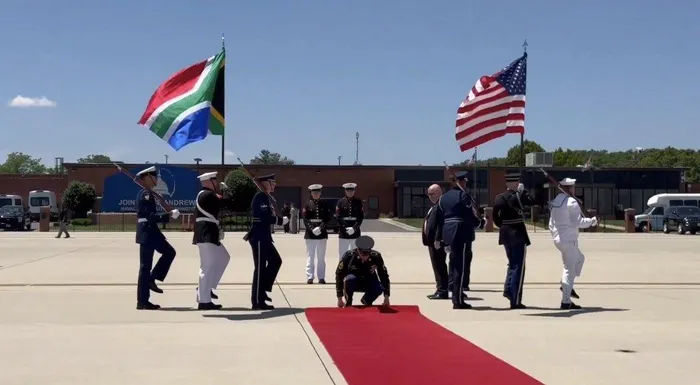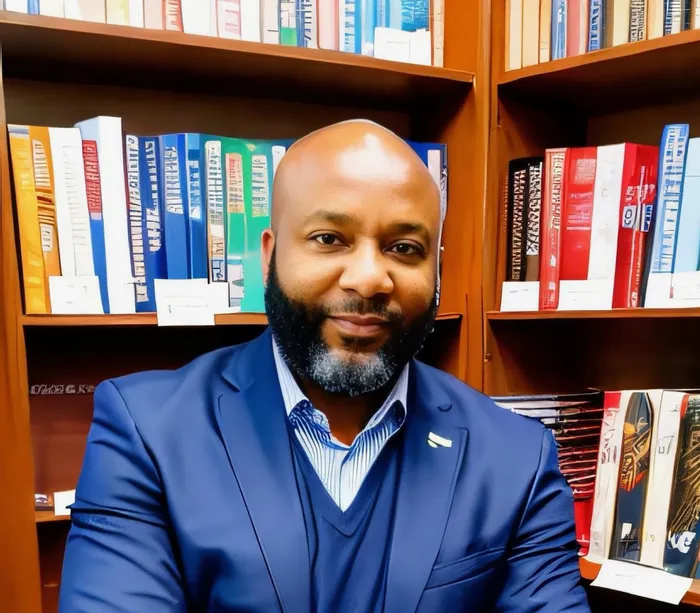Beyond the red carpet: Understanding the difference between Ramaphosa's state, official and working visit to Trump and the US

President Cyril Ramaphosa reassures confidence ahead of meeting with Donald Trump
Image: Twitter
President Cyril Ramaphosa’s recent low-key arrival on a working visit to the United States on Monday, including his upcoming meeting with President Donald Trump scheduled for Wednesday, sparked social media debate about the expected pomp for a head of state’s arrival.
Some mistakenly attribute this to the breakdown in relations between the two countries and the perceived disrespect or lack of support from the Americans for President Ramaphosa. However, the strained relationship between the two nations is not a factor influencing the President’s reception upon arrival.
This confusion stems from a common misconception that all visits by heads of state or government are marked by elaborate ceremonies. However, diplomatic visits vary significantly in protocol and purpose, primarily distinguished as state visits, official visits, and working visits.
Difference Between State Visits, Official Visits and Working Visits
State Visit
A state visit is the highest and most formal type of diplomatic visit, made by a head of state (such as a president or monarch) to another country’s head of state, usually at the invitation of the host. It involves extensive ceremonial protocols, including:
- Formal arrival ceremonies with red carpets, national anthems, guard of honour, and a 21-gun salute.
- State banquets hosted by the host head of state.
- Exchange of official gifts.
- Cultural events and visits to landmarks.
- The host country bears most expenses.
- A multi-day programme with broad diplomatic, cultural, and social engagements.
- State visits symbolise the strongest bilateral ties and mutual respect between countries and are relatively rare, often limited to one per head of state during their term.

President Cyril Ramaphosa’s Washington visit may include talks on Starlink and Tesla, signaling a shift in US-South Africa trade and tech diplomacy.
Image: Supplied/GCIS
Official Visit
An official visit is a formal visit that is less ceremonial than a state visit but still involves a head of government (such as a prime minister) or sometimes a head of state. It is usually initiated by the visiting country rather than the host and focuses on diplomatic and governmental business. Key features include:
- Limited or no ceremonial honours like guard of honour or gun salutes.
- Shorter duration, often one or two days.
- No state banquets, but possibly working luncheons or dinners.
- Focus on official meetings and discussions.
- Expenses may be shared or borne by the visitor’s government.
- Official visits are common for heads of government and senior officials and serve as important platforms for bilateral cooperation without the pomp of state visits.
Working Visit
A working visit is primarily functional and focused on specific issues such as trade, security, or negotiations on a specific issue. It is usually initiated by the visiting country. It can be by a head of state or government but involves minimal protocol:
- No formal arrival or departure ceremonies.
- No State banquets and usually no publicised working luncheons.
- Meetings are business-like and focused.
- Spouses and large delegations usually do not participate.
- Often shorter and less publicised.
- The visit is focused on substantive discussions rather than ceremony.
- The host country may or may not cover expenses, logistics, security etc. depending on specific requests and arrangements between the two countries.
President Ramaphosa’s visit to the US was classified as a working visit, reflecting its purpose to engage in focused talks with President Trump on bilateral, regional, and global matters without the fanfare of a state visit. This explains the absence of a grand ceremony despite the visit’s importance.
Protocols and Significance
The protocols for state visits are designed to symbolise respect, friendship, and the importance of the relationship between the two countries. They serve both diplomatic and symbolic functions, reinforcing alliances and showcasing cultural ties. The grandeur of a state visit also signals the high regard in which the visiting leader and their country are held.
Working visits, by contrast, prioritise efficiency and direct dialogue. They allow leaders to address pressing issues without the distractions of ceremonial obligations. This format is often preferred when time is limited or when the relationship requires practical engagement rather than symbolic gestures.
Why the Confusion?
The public often assumes that all visits by presidents or prime ministers entail elaborate receptions because high-profile state visits receive extensive media attention. However, state visits are relatively rare and reserved for occasions of significant diplomatic importance. Working visits are more common and practical, especially when the agenda is focused on urgent or complex negotiations.
In the case of President Ramaphosa’s visit, the absence of a grand reception led to misunderstandings on social media, where some expected a state visit’s pomp. Understanding the distinction clarifies that the visit’s low-key nature was appropriate for its working focus and did not diminish its diplomatic importance.

Nco Dube a political economist, businessman, and social commentator.
Image: Supplied
Conclusion
State visits and working visits serve different purposes in international diplomacy. State visits are ceremonial, symbolising friendship and respect between nations, while working visits are pragmatic, focusing on substantive discussions without elaborate protocol. President Ramaphosa’s current working visit to the US is a strategic engagement aimed at resetting bilateral relations, appropriately conducted without the formalities of a state visit.
Recognising these differences helps manage public expectations and appreciate the nuances of diplomatic interactions. This understanding underscores that the absence of ceremony does not equate to a lack of significance in international relations. Rather, it reflects the nature and intent of the visit within the broader context of diplomacy.
(Dube is a political economist, businessman, and social commentator on Ukhozi FM. His views don't necessarily reflect those of the Sunday Tribune or IOL. Read more of his articles here: www.ncodube.blog)
